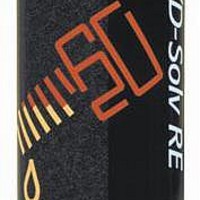3040-13S Techspray, 3040-13S Datasheet - Page 4

3040-13S
Manufacturer Part Number
3040-13S
Description
Cleaner/Degreaser, Rapidly Evaporating; Aerosol; -17 degC; 149 degC; NIF
Manufacturer
Techspray
Type
Degreaserr
Datasheet
1.3040-13S.pdf
(6 pages)
Specifications of 3040-13S
Application
Cleaning and degreasing
Boiling Point
149 °C
Chemical Component
2-Methyl Butyl Acetate/Acetone/Carbon Dioxide (Aerosol Propellant)/Heptane/Naphtha C5-C6/n-Pentyl Acetate
Dispensing Method
Aerosol
Evaporation
NIF
Flash Point
-17 °C
Physical State
Aerosol
Primary Type
Cleaner
Special Features
Non-Corrosive
Weight
13 Oz.
Product
Cleaners & Degreasers
Size
13 oz
Container
Aerosol
Lead Free Status / Rohs Status
RoHS Compliant part
Hazardous Materials
4. FIRST AID MEASURES
5. FIRE FIGHTING MEASURES
C/D Solv RE
SIGNS AND SYMPTOMS OF OVEREXPOSURE
TARGET ORGAN STATEMENT: Prolonged or repeated overexposure may cause central nervous system,
kidney, liver, and lung damage.
EYES: Immediately flush eyes with plenty of water for at least 15 minutes. Get immediate medical attention.
SKIN: Wash with soap and water. Get medical attention if irritation develops or persists.
INGESTION: Aspiration hazard. If swallowed, vomiting may occur spontaneously, but do not induce. If vomiting
occurs, keep head below hips to prevent aspiration into lungs. Call a physician immediately.
INHALATION: Remove to fresh air. If not breathing, give artificial respiration or give oxygen by trained
personnel. Seek immediate medical attention.
FLASHPOINT AND METHOD: -18°C (0°F)TAG CC
FLAMMABLE LIMITS: 2.0 to 12.0
GENERAL HAZARD: Flammable Liquid. Can release vapors that form explosive mixtures at temperatures at or
above the flash point.
EXTINGUISHING MEDIA: Use alcohol foam, carbon dioxide, or water spray when fighting fires involving this
material.
HAZARDOUS COMBUSTION PRODUCTS: Smoke, fumes and oxides of carbon.
EXPLOSION HAZARDS: Vapors may form explosive mixture with air.
SKIN: Prolonged or repeated contact can result in defatting and drying of the skin which may result in skin
irritation and dermatitis (rash).
INGESTION: Harmful if swallowed.
INHALATION: High concentrations in immediate area can displace oxygen and can cause dizziness,
unconsciousness, and possibly death with longer exposure. Keep people away from such vapors without self-
contained breathing apparatus.
EYES: Symptoms of overexposure include: stinging, tearing, redness and pain.
SKIN: Prolonged or exposure may cause skin irritation.
INGESTION: For large amounts; abdominal pain, nausea and vomiting.
INHALATION: High concentrations may lead to central nervous system effects (drowsiness, dizziness, nausea,
headaches, paralysis and loss of consciousness).
ACUTE TOXICITY: Overexposure may cause dizziness and loss of concentration. At higher levels, CNS
depression and cardiac arrhythmia may result.





